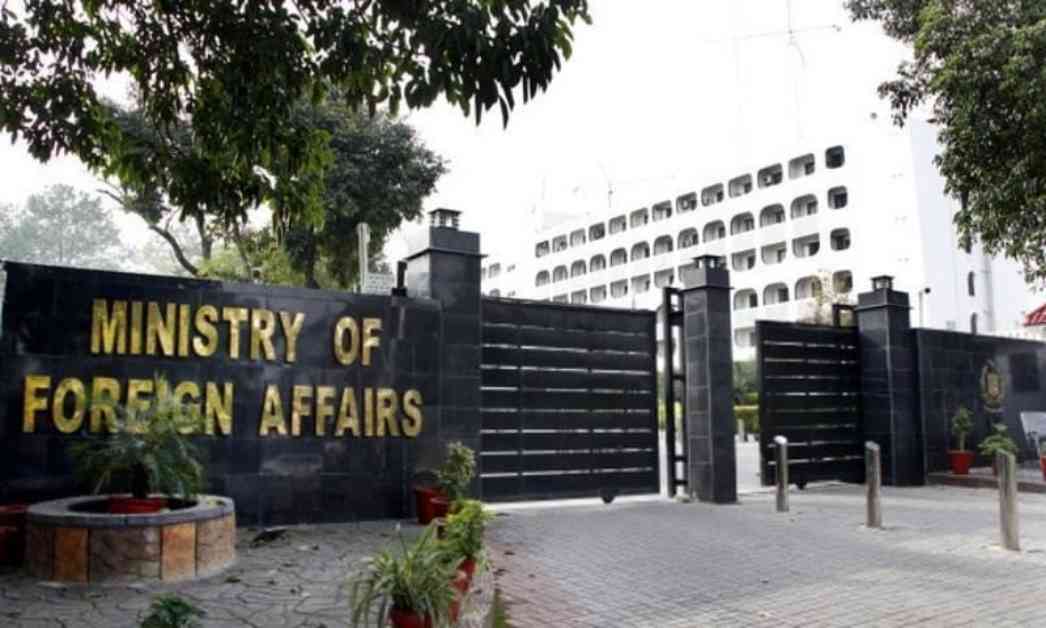US Weapons Left in Afghanistan Fueling Terror Attacks in Pakistan: Foreign Office
The Foreign Office has raised alarming concerns about the aftermath of the US troop withdrawal from Afghanistan in August 2021, which left behind advanced military equipment now being utilized by terrorist groups like Tehreek-e-Taliban Pakistan (TTP) to carry out attacks on Pakistani soil.
The Safety Risks and Repercussions
Foreign Office spokesperson Shafqat Ali Khan emphasized the safety risks posed by these abandoned weapons, underscoring the significant threat they pose to Pakistan’s security and its citizens. In a recent statement, Khan reiterated Pakistan’s continuous appeals to the Afghan authorities to take all necessary measures to prevent these weapons from falling into the hands of terrorists.
The US military equipment left behind includes a wide array of hardware, ranging from aircraft to air-to-ground munitions, vehicles, and communication gear, which were not adequately secured during the chaotic withdrawal. This failure to safeguard the equipment allowed the Taliban to quickly seize control of much of the military hardware, further complicating Pakistan’s security challenges.
Former US President Donald Trump recently made headlines by threatening to cut off financial aid to Afghanistan if the Taliban did not return the military equipment. Trump’s tough stance on the issue has reignited debates surrounding the accountability for the abandoned weapons and their potential impact on regional security.
The Fallout of the Withdrawal
The US Department of Defense reported in 2022 that a staggering $7 billion worth of military equipment was left behind in Afghanistan, the majority of which was swiftly seized by Taliban forces as they swiftly took control of the country. While some efforts were made by US forces to dismantle or destroy certain machinery during the pullout, a significant amount still ended up in the hands of the Taliban.
Criticism has been mounting over the chaotic nature of the US withdrawal, particularly concerning the swift collapse of the Afghan government and the subsequent resurgence of the Taliban. The scenes of chaos and violence that unfolded in the wake of the troop withdrawal, culminating in a deadly suicide bombing at Kabul’s airport, have raised questions about the strategic planning and execution of the withdrawal process.
The Biden Administration’s Role
While it was under the Trump administration that the initial deal with the Taliban for troop withdrawal was signed, it was ultimately President Joe Biden’s administration that carried out the agreement. The transition of power in Afghanistan from the Afghan government to the Taliban in August 2021 was marked by a rapid series of events that caught many by surprise, leading to widespread criticism of the handling of the withdrawal process.
The refusal of the Taliban to return the military equipment and their calls for more advanced weaponry to combat Da’ish have further complicated the situation in the region. The implications of this unanticipated turn of events continue to reverberate across the geopolitical landscape, prompting renewed discussions about the long-term repercussions of the US military presence in Afghanistan and its aftermath.
In conclusion, the unresolved issue of the abandoned US military equipment in Afghanistan serves as a stark reminder of the complex challenges and unforeseen consequences that can arise from hasty decisions and poorly executed strategies. The safety risks posed by these weapons, now in the hands of hostile groups, underscore the critical need for comprehensive planning and coordination in addressing security threats and ensuring regional stability.









